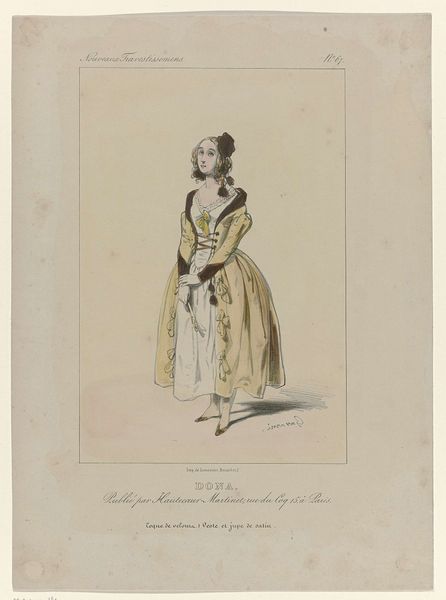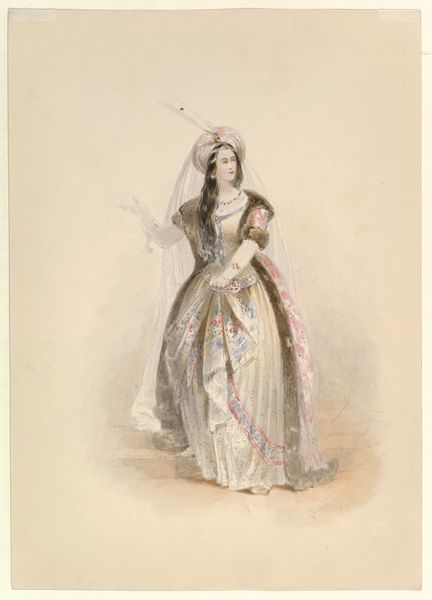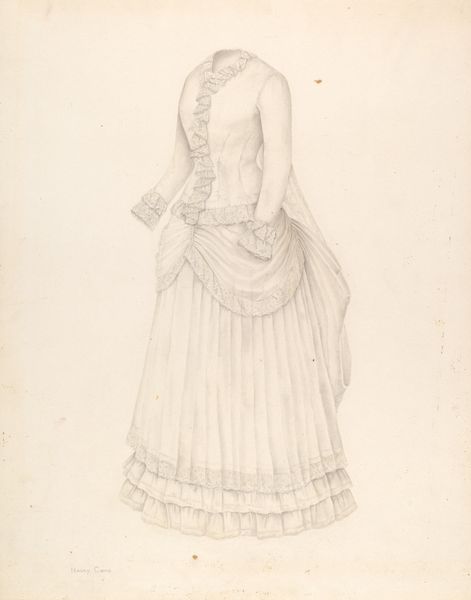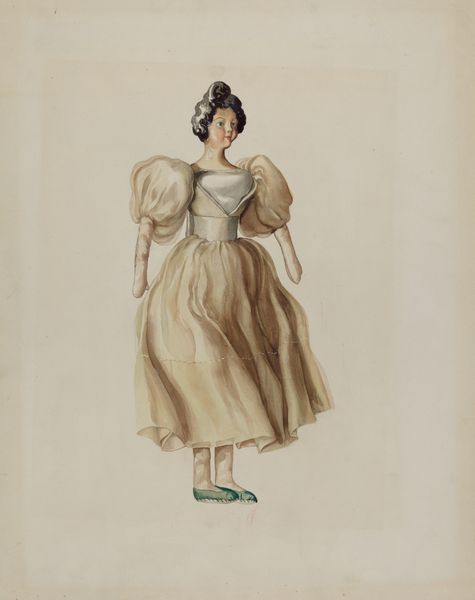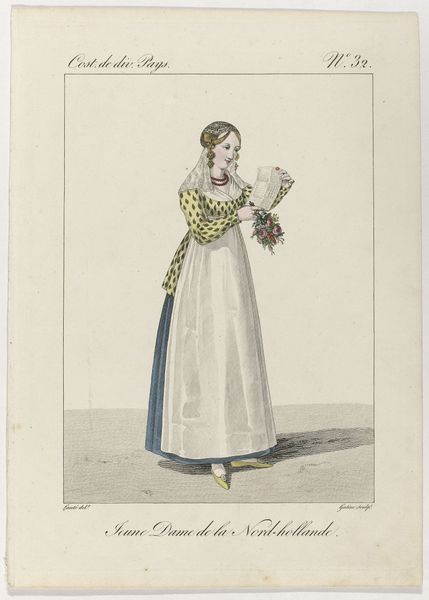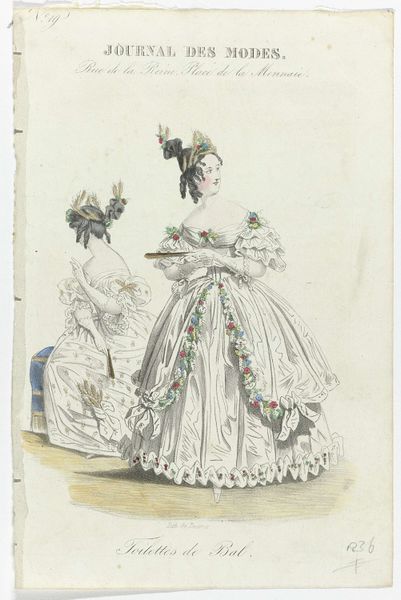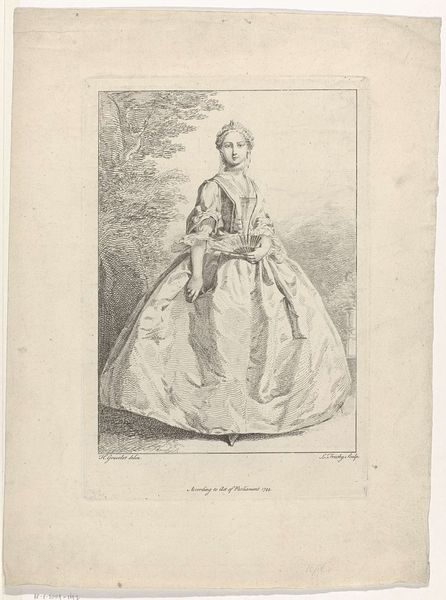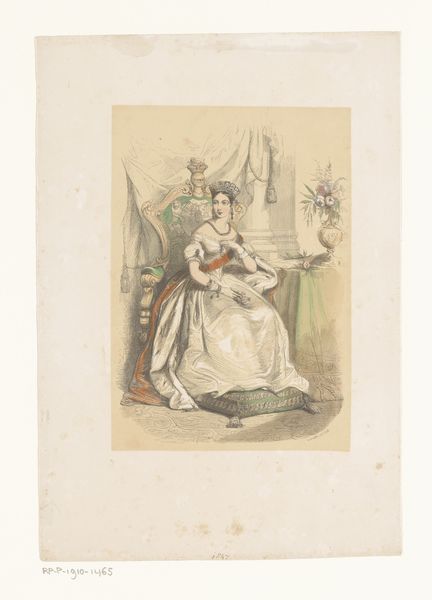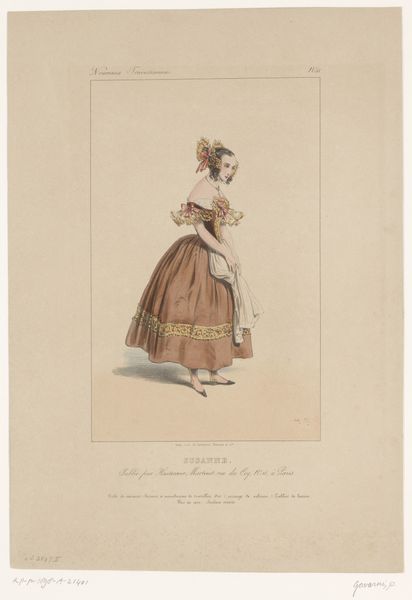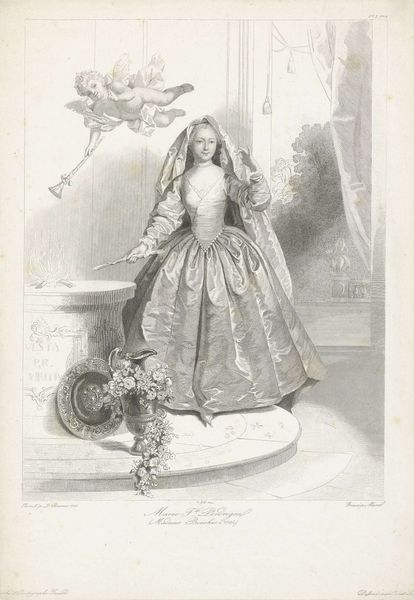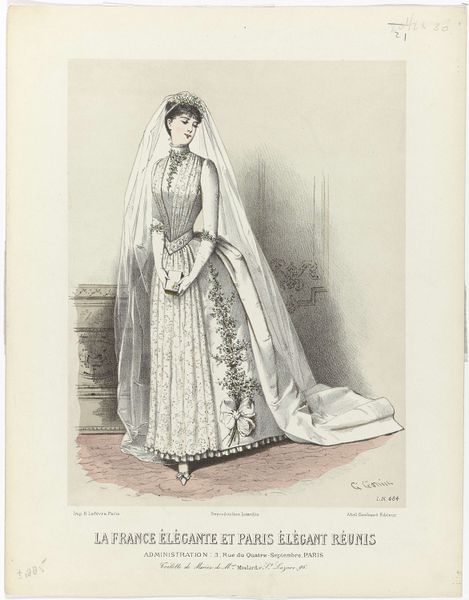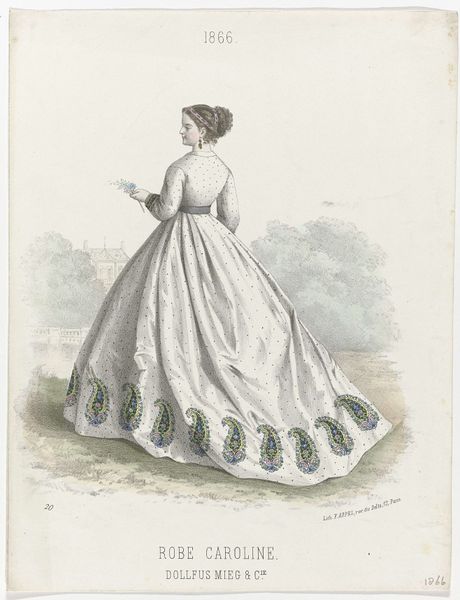
drawing, paper, watercolor
#
portrait
#
drawing
#
paper
#
watercolor
#
romanticism
#
watercolour illustration
#
watercolor
Dimensions: height 360 mm, width 270 mm
Copyright: Rijks Museum: Open Domain
Huib van Hove’s “Bruid” comes to us via the printmaking technique of lithography, which allowed for the relatively fast reproduction of images on paper. The appearance of “Bruid” is influenced by lithography’s unique processes, where an image is drawn on a flat stone or metal plate with a greasy substance, then printed using oil-based inks. The soft tonality and delicate lines seen here speak to these direct, hand-executed processes, resembling the textures and tonal gradations of a chalk or pencil drawing. In the 19th century, lithography was not just about art, but about information. In this image, the material and process are tied to social issues of labor, politics, and consumption in a rapidly industrializing era, where printed images had an influence on the rise of consumer culture, advertising, and the widespread distribution of visual information. Considering the material and making of this print reminds us of the blurred boundaries between fine art and craft.
Comments
No comments
Be the first to comment and join the conversation on the ultimate creative platform.
